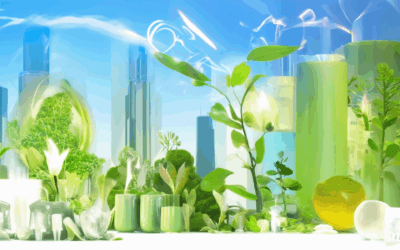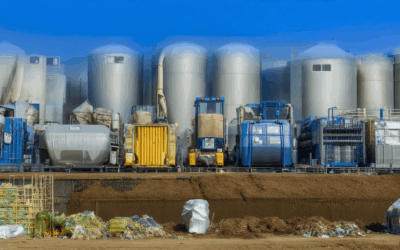As global demand for sustainable solutions continues to rise, industries are increasingly exploring innovative processes to reduce their environmental footprint. One such process gaining traction is pyrolysis, a thermal decomposition technique that breaks down materials into simpler compounds. While pyrolysis offers promising applications across various sectors, the question remains: is pyrolysis truly environmentally friendly? This comprehensive guide delves into the benefits, challenges, and potential pitfalls of pyrolysis, providing insights into how it can be implemented as a sustainable alternative. From waste management to energy production, pyrolysis presents unique opportunities, but its impact on the environment requires careful consideration. By examining case studies, technological advancements, and common misconceptions, this article aims to shed light on the viability of pyrolysis in achieving long-term sustainability goals. Whether you’re curious about the ecological benefits of pyrolysis or looking to understand its limitations, this guide serves as an essential resource for anyone interested in exploring the future of sustainable practices.

Is Pyrolysis Environmentally Friendly?
Pyrolysis is generally considered environmentally friendly due to its ability to transform organic waste into valuable resources while reducing environmental impacts. Here’s a breakdown of its environmental benefits:
- Reduction of Landfill Waste : Pyrolysis diverts organic waste from landfills, where it would otherwise decompose anaerobically and release methane, a potent greenhouse gas. By converting this waste into biochar, pyrolysis helps reduce landfill contributions to environmental degradation.
- Carbon Sequestration : Biochar produced through pyrolysis acts as a carbon sink, storing carbon and preventing its return to the atmosphere. This contributes to carbon mitigation efforts and helps combat climate change.
- Improved Soil Health : Biochar enhances soil fertility by increasing water retention capacity and nutrient availability. This reduces the need for synthetic fertilizers, decreasing agricultural runoff and protecting ecosystems from harmful chemicals.
- Support for Circular Economy : Pyrolysis promotes a circular economy by converting waste into a reusable resource, aligning with sustainable development goals focused on resource conservation and waste reduction.
While pyrolysis offers numerous environmental benefits, factors like energy consumption and process efficiency must be carefully managed to maximize its positive impact. Overall, pyrolysis is a promising eco-friendly process that supports sustainable practices and aligns with global environmental objectives.
How to Make Pyrolysis Sustainable
To make pyrolysis sustainable, consider the following key strategies:
- Energy Efficiency : Transition to renewable energy sources such as solar or wind to power pyrolysis plants. Additionally, utilize waste heat generated during the process for other applications, reducing overall energy consumption.
- Feedstock Management : Optimize the selection and preparation of feedstocks. Utilize municipal solid waste, which is abundant and often sent to landfills. Implement efficient drying techniques to manage moisture levels and ensure proper decomposition.
- Gas Utilization : Enhance the process by upgrading the gases produced, such as syngas, into valuable fuels or chemicals. This not only increases the product value but also minimizes environmental impact.
- Waste Management : Develop effective methods for storing biochar and find innovative uses for it, such as in agricultural applications, to maximize its benefits.
- Policy and Regulation : Work with governments to establish supportive policies and incentives for sustainable pyrolysis practices. Engage with policymakers to create frameworks that promote this technology.
- Public Awareness : Educate the public about the environmental benefits of pyrolysis and its role in promoting sustainability. Encourage community involvement and awareness campaigns.
- Collaboration : Partner with leading organizations and companies in the field, such as Pyrolysium, to leverage expertise and resources. Collaborate with various sectors, including technology firms and environmental groups, to drive innovation.
- Technology Advancement : Invest in research and development to continuously improve the efficiency and cost-effectiveness of the pyrolysis process. Stay updated on technological advancements that enhance sustainability.
- Metrics and Monitoring : Measure the success of sustainable pyrolysis initiatives through indicators such as reductions in carbon emissions and increases in resource recovery rates. Use these metrics to guide continuous improvement efforts.
By implementing these strategies, pyrolysis can become a more sustainable and environmentally friendly solution to waste management challenges.

Why We Don’t Use Pyrolysis
Pyrolysis, the thermal decomposition of organic materials to produce biochar and other useful byproducts, is not widely adopted due to several factors:
- High Energy Requirements: Pyrolysis processes often demand significant amounts of energy, making them energy-intensive. The high temperatures needed can lead to increased energy consumption, which may not always be justified by the benefits.
- Cost Considerations: The initial investment and operational costs associated with setting up pyrolysis facilities can be substantial, limiting accessibility for smaller-scale operations and regional implementations.
- Availability of Alternatives: Established methods like traditional composting and incineration are already effective and widely implemented, reducing the incentive to adopt pyrolysis unless there’s a clear advantage.
- Regulatory Hurdles: The high temperatures involved in pyrolysis may necessitate special permits and safety protocols, adding complexity to the implementation process.
- Scalability Issues: Pyrolysis may be more suited for controlled, large-scale industrial applications rather than smaller, decentralized setups, limiting its versatility.
- Environmental Concerns: While biochar offers benefits, the process itself releases greenhouse gases, potentially offsetting its positive impacts unless emissions are effectively managed.
- Lack of Public Awareness: Limited knowledge about pyrolysis’s potential and benefits can hinder its adoption despite its promising outcomes.
To overcome these challenges, continued research and development could enhance efficiency and reduce costs. Partnerships between governments and industries might facilitate regulatory support and infrastructure development, while educational campaigns could raise public awareness and acceptance of pyrolysis as a sustainable solution.

Downsides of Pyrolysis
While pyrolysis offers numerous benefits, it also presents several challenges and drawbacks:
- High Costs:** Pyrolysis facilities require significant investment in equipment and infrastructure, making the initial setup expensive. Maintenance and repair costs can also add to operational expenses.
- Energy Intensity:** The process requires substantial energy input, often relying on non-renewable sources, which can increase carbon emissions and strain energy grids.
- Environmental Concerns:** Emissions produced during pyrolysis, such as CO2, CH4, and N2O, contribute to greenhouse gas levels. Contaminants may also leach from biochar if not properly managed, potentially harming soil and water.
- Safety Risks:** High temperatures and pressurized systems pose significant safety hazards, including the risk of fires, explosions, and severe injuries if safety protocols are not followed.
- Scalability Issues:** While effective for large-scale applications, pyrolysis may be less feasible for smaller operations or remote areas due to infrastructure limitations.
- Public Perception and Trust:** Public skepticism towards new technologies, coupled with historical incidents involving similar processes, can hinder acceptance and implementation.
Is Pyrolysis Just Burning?
Pyrolysis is not simply burning. While both processes involve heat, pyrolysis occurs in the absence of oxygen, unlike combustion, which requires oxygen to proceed. Here’s a breakdown of the key differences:
- Oxygen Presence: Pyrolysis happens without oxygen, whereas combustion requires it.
- Temperature Range: Pyrolysis typically occurs at higher temperatures (around 500°C or more), compared to the lower temperatures of combustion.
- Process Type: Pyrolysis is a decomposition process that breaks down materials into different substances, such as char or carbon dioxide, rather than combusting them into flames.
- Products: The resulting products from pyrolysis, like biochar, can have valuable uses, unlike the typically non-valuable byproducts of combustion.
This distinct process allows pyrolysis to be utilized in various applications, such as converting organic waste into biochar for soil amendment, making it a unique and important method separate from ordinary burning.

Tire Pyrolysis Plant Cost
The cost of a tire pyrolysis plant varies significantly based on several factors, including size, technology, and location. Generally, the cost ranges from $39,000 to $280,000 USD , depending on the scale and complexity of the facility.
Key factors influencing the cost include:
- Plant Size : Smaller plants may cost around $50,000 to $100,000 USD , while larger facilities with higher capacities can exceed $200,000 to $300,000 USD .
- Technology : Advanced pyrolysis technologies and automation systems can increase costs, while basic designs may be more affordable.
- Reactor Design : The type of reactor used, such as rotary kiln or fluidized bed reactors, impacts both initial and operational costs.
- Location : Construction costs differ widely based on regional factors like labor rates and infrastructure availability.
Competitors in the market offer various pricing options, including companies like Eco-Tech and TDOil . These providers tailor their solutions to meet specific client needs, ensuring flexibility in pricing to accommodate different project requirements.
For detailed pricing and customization, contact pyrolysis plant manufacturers directly to obtain precise quotes tailored to your project specifications.
Learn more about our tire pyrolysis solutions .
Conclusion: The cost of a tire pyrolysis plant is influenced by size, technology, and location, ranging from $39,000 to $280,000 USD. Evaluating these factors and consulting with experts ensures you find the most suitable solution for your needs.




0 Comments